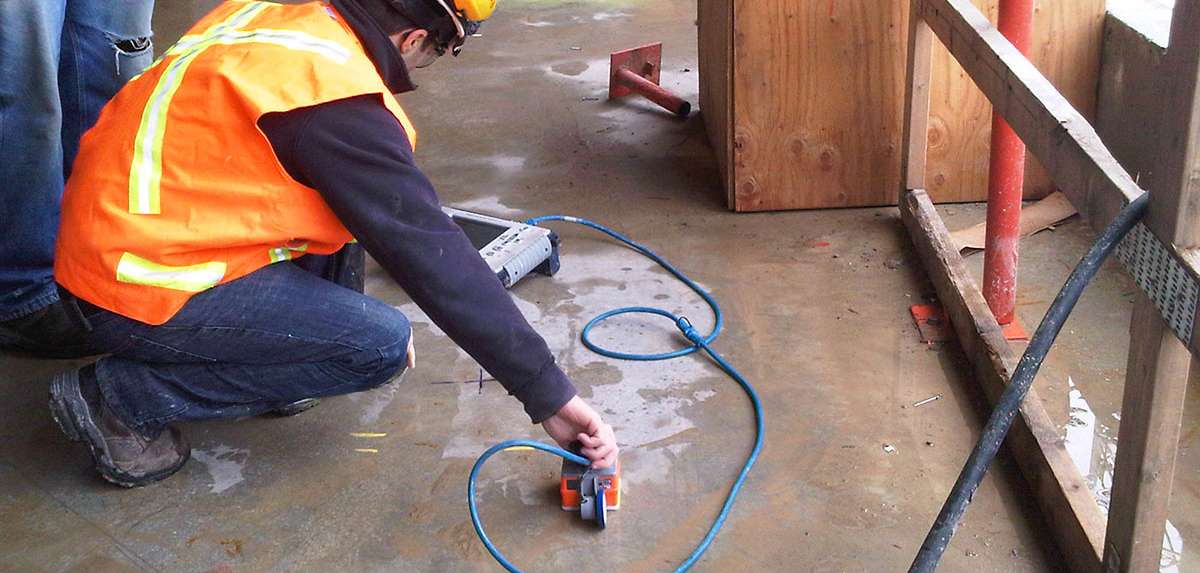Thorough Insights into Concrete Scanning Procedures
Thorough Insights into Concrete Scanning Procedures
Blog Article
Unveil the Transformative Power of Concrete Scanning in Maximizing Performance and Safety
Concrete scanning has actually emerged as a crucial tool in the construction market, using unmatched advantages in boosting task efficiency and making certain safety standards. The transformative power of concrete scanning lies in its ability to offer real-time data and thorough insights, transforming exactly how jobs are prepared and executed.
Significance of Concrete Scanning
Ensuring the architectural stability and safety and security of building jobs starts with the important action of carrying out thorough concrete scanning. Concrete scanning is a non-destructive technique made use of to discover and map subsurface components within concrete frameworks. This procedure is necessary in identifying prospective hazards, such as rebar, post-tension cords, and conduits, that may be hidden within the concrete. By utilizing advanced technologies like ground-penetrating radar (GPR) and electro-magnetic induction, building and construction teams can accurately find these aspects without creating any kind of damage to the framework.
In addition, concrete scanning aids in optimizing task timelines and spending plan by avoiding unexpected costs and hold-ups that might emerge due to unexpected obstructions within the concrete. Ultimately, spending in thorough concrete scanning is an aggressive approach that boosts both performance and security in building projects.
Just How Concrete Scanning Functions
Concrete scanning runs as a crucial device in building tasks by using sophisticated technologies to spot and map subsurface components without causing architectural damage. Ground Penetrating Radar (GPR) and Electromagnetic Induction (EMI) are 2 key approaches made use of in concrete scanning. GPR jobs by emitting high-frequency radar pulses right into the surface, which recover when they come across subsurface objects or spaces. The moment taken for the signal to return shows the deepness and area of the items. EMI, on the other hand, utilizes magnetic fields to recognize variances in product compositions, such as recognizing rebar or channels within concrete frameworks.
Throughout the scanning process, the data accumulated is analyzed in real-time, allowing immediate identification of possible hazards or challenges underneath the surface area. By utilizing these innovative technologies, concrete scanning substantially minimizes the threat of pricey problems and injuries on construction sites.
Benefits of Concrete Scanning
One of the key advantages of concrete scanning is the ability to discover and situate embedded things such as rebar, post-tension cable televisions, and conduits precisely. Concrete scanning helps in preparation and designing more effectively, as it supplies precise info concerning the place and depth of architectural parts.
Situation Research Studies: Concrete Scanning Success

In an additional situation, a building and construction company used 3D concrete scanning to analyze the condition old concrete structures in a historical building. The comprehensive scans supplied valuable insights into the level of wear and tear and assisted focus on upkeep efforts properly. By proactively dealing with areas of problem recognized through scanning, the company had the ability to extend the lifespan of the structure and make sure owner safety.
These study emphasize the transformative power of concrete scanning in enhancing efficiency, accuracy, and safety in building jobs.
Implementing Concrete Scanning in Projects
Executing advanced scanning innovations during building tasks has actually become increasingly important for enhancing precision and safety. By incorporating concrete scanning into job planning and execution, building and construction groups can identify prospective risks, such as rebar or post-tension cable televisions, hidden within concrete structures. This proactive method minimizes the risk of crashes, hold-ups, and costly rework, ultimately resulting in more reliable task timelines and spending plans.
To carry out concrete scanning properly, task managers should team up very closely with knowledgeable scanning professionals to determine pop over here the most ideal scanning strategies for the particular task needs. Engaging scanning professionals from the early phases of a project makes it possible for the team to create thorough scanning strategies that resolve vital areas of issue and ensure thorough information collection.
In addition, integrating concrete scanning into normal project operations can improve decision-making procedures, as real-time scan information provides instant insights into the problem of concrete frameworks - Concrete Scanning. This data-driven method promotes notified analytic and allows groups to make changes without delay, promoting a society of efficiency and safety and security throughout the job lifecycle

Verdict
Finally, concrete scanning plays an essential function in boosting effectiveness and safety in building jobs. By making use of innovative technology to find and map out underlying frameworks within concrete, this procedure aids to avoid costly errors, guarantee architectural integrity, and reduce dangers on website. With the capacity to reveal concealed components and provide accurate data, concrete scanning shows to be a useful device for enhancing job results and making the most of general success.
Concrete scanning is a non-destructive technique utilized to find and map subsurface components within concrete frameworks. In addition, concrete scanning aids in maximizing task timelines and budget plan by preventing unanticipated expenses and delays that might arise due to unexpected blockages within the concrete. One notable case study entails a large remodelling job where concrete scanning played a critical function in making sure project success.In another instance, a building and construction firm used 3D concrete scanning to evaluate the condition of maturing concrete structures in a historic building. By integrating concrete scanning right into job planning and implementation, building teams can identify potential dangers, such as rebar or post-tension cords, hidden within concrete frameworks.
Report this page